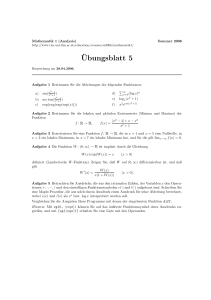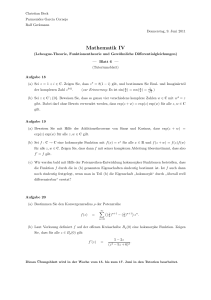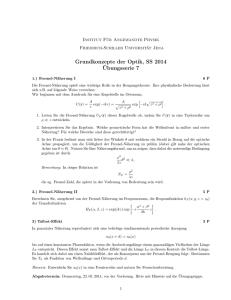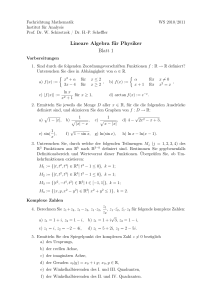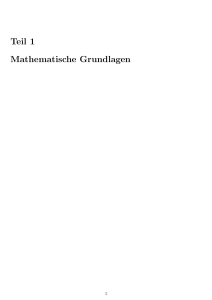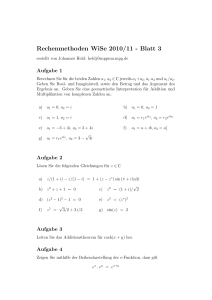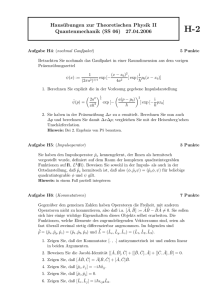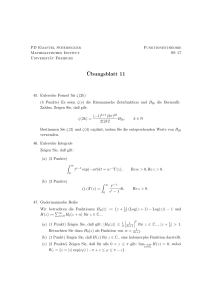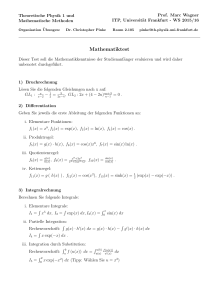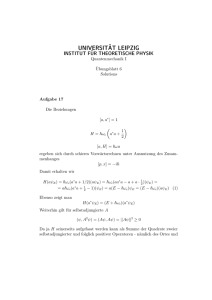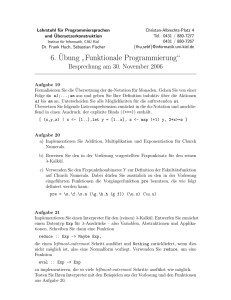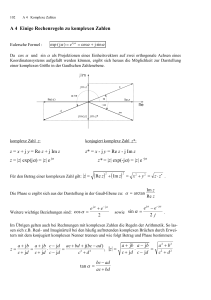1.5 Komplexe Zahlen
Werbung
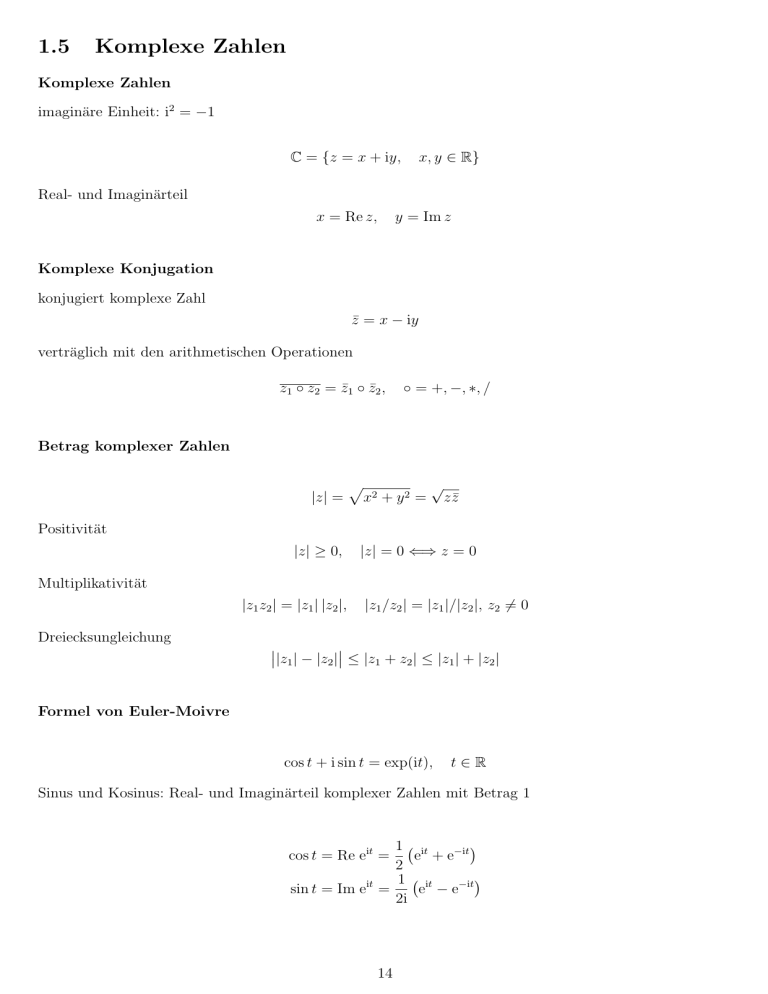
1.5
Komplexe Zahlen
Komplexe Zahlen
imaginäre Einheit: i2 = −1
C = {z = x + iy,
x, y ∈ R}
Real- und Imaginärteil
x = Re z,
y = Im z
Komplexe Konjugation
konjugiert komplexe Zahl
z̄ = x − iy
verträglich mit den arithmetischen Operationen
z1 ◦ z2 = z̄1 ◦ z̄2 ,
◦ = +, −, ∗, /
Betrag komplexer Zahlen
|z| =
Positivität
|z| ≥ 0,
p
√
x2 + y 2 = z z̄
|z| = 0 ⇐⇒ z = 0
Multiplikativität
|z1 z2 | = |z1 | |z2 |,
Dreiecksungleichung
|z1 /z2 | = |z1 |/|z2 |, z2 6= 0
|z1 | − |z2 | ≤ |z1 + z2 | ≤ |z1 | + |z2 |
Formel von Euler-Moivre
cos t + i sin t = exp(it),
t∈R
Sinus und Kosinus: Real- und Imaginärteil komplexer Zahlen mit Betrag 1
1 it
e + e−it
2
1 it
it
sin t = Im e =
e − e−it
2i
cos t = Re eit =
14
Gaußsche Zahlenebene
Im(z)
Im(z)
x
z = reiϕ
z = x + iy
r
y
|z|
ϕ
−ϕ
Re(z)
Re(z)
z = re−iϕ
z = x − iy
Darstellung in Polarkoordinaten
z = r(cos ϕ + i sin ϕ) = r exp(iϕ)
mit
r = |z| =
σ = 0 für x ≥ 0, σ = ±π für x < 0
z
r
ϕ
p
x2 + y 2 ,
ϕ = arg(z) = arctan y/x + σπ
Standardbereich ϕ ∈ (−π, π]
1 −1
±i
1ñ i
1 1
1
2
0 π ±π/2 ±π/4
√
√
3 ± i 1 ± 3i
2
2
±π/6
±π/3
Multiplikation komplexer Zahlen
zk = xk + iyk = rk exp(iϕk )
z1 z2 = (x1 x2 − y1 y2 ) + (x1 y2 + x2 y1 )i = r1 r2 exp(i(ϕ1 + ϕ2 ))
Division komplexer Zahlen
zk = xk + iyk = rk exp(iϕk )
x1 x2 + y1 y2 x2 y1 − x1 y2
r1
z1
=
+
i = exp(i(ϕ1 − ϕ2 ))
2
2
2
2
z2
x2 + y 2
x2 + y 2
r2
Kehrwert
1
1
1
x
y
= 2 z̄ = exp(−iϕ) = 2 − 2 i
z
r
r
r
r
15
Komplexe Einheitswurzeln
zn = 1
zk = wnk ,
k = 0, . . . , n − 1
wn = exp(2πi/n),
Im z
wn1
wn0 = 1
Re z
wnn−1
Potenzen einer komplexen Zahl
ganzzahlige Exponenten m ∈ Z
z m = rm eimϕ ,
z = reiϕ
rationale Exponenten p/q ∈ Q
z p/q = rp/q exp (ipϕ/q) wqkp ,
k = 0, . . . , q − 1
mit wqk = exp (2πi/q)k den q-ten Einheitswurzeln
Kreis in der Gaußschen Zahlenebene
|z − a| = s|z − b|,
Mittelpunkt
w=
Radius
s 6= 1
s2
1
a
−
b
1 − s2
1 − s2
r=
s
|b − a|
|1 − s2 |
Parameterform des Kreises
w + reit ,
t ∈ [0, 2π)
16
